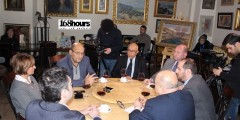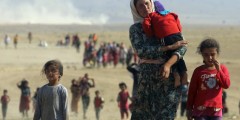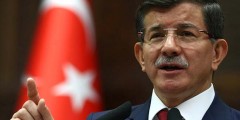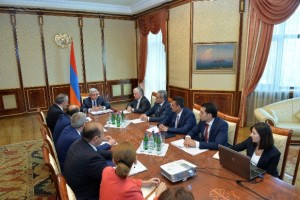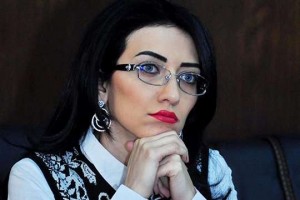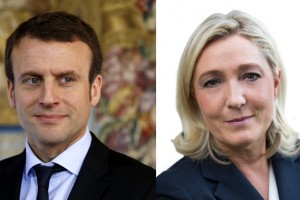Armenia’s membership in the Eurasian Economic Union already has a two-year record. What the country has benefited from it? What do experts predict? What programs are planned for 2017? Yaroslav Lissovolik, the Chief Economist at Eurasian Development Bank (EDB), told ARKA News Agency in an exclusive interview.
ARKA – Armenia’s membership in the Eurasian Economic Union already has a two-year record. How effective Armenia uses the Eurasian Economic Union’s potential?
Lissovolik – Armenia uses the union’s potential even more than its other members do, though, of course, it is still far from the desired extent. The 2016 results show that progress in such an important segment as interstate trading has been achieved exactly by Armenia.
We saw a quite considerable growth of Armenia’s exports in 2016, and they were largely oriented to the Eurasian Economic Union and Russian markets.
In this connection, I’d like to mention especially a significant growth in supplies of Armenian foods to Russia. Indeed, it can be said for sure that Armenian producers and the Armenian side have managed to take advantage of those niches in Russia’s foods market which appeared in several recent years and which are not fully occupied yet by Russian producers or Eurasian Economic Union partners.
I think this export indicator gives certain grounds for optimism. I also find it necessary to look at intensification of investment cooperation. There is a huge untapped capacity here, and it should be used.
ARKA – In which segments Armenia can build up its exports to the Eurasian Economic Union?
Lissovolik – First of all, I would put special emphasis on several aspects. Armenia is indeed competitive and it is able to build up food exports to our countries’ markets.
I would also like to point out that Armenia has an opportunity for using human resources and for enlarging cooperation in the information technology industry and hi-tech sectors. Our countries need to do something here to establish joint enterprises for boosting goods and services at third countries’ markets.
ARKA – What can you say about Armenia’s economic indicators?
Lissovolik – As a whole, I think, Armenia showed not bad results in 2016 despite some slowdown in the second half of the year. It is necessary to take into account the fact that outside developments were quite challenging, especially amid the dwindling remittances, also from Russia.
It is more important in this context to have such adverse factors offset, first of all, by growth of exports. I think it will be very difficult for our countries to integrate and develop without that.
In this context, Armenia’s example is very important for other Eurasian Economic Union member countries.
I will take it upon myself to assume that we’ll see interstate trade recovery in the Eurasian Economic Union and growth of its share in the total trade turnover of our countries.
Armenia has built up the share of its exports to the Eurasian Economic Union a great deal – by about 20 percent.
This is one of the indicators showing that our countries can use the opportunities of this integration.
ARKA – According to statistical reports, Armenian commodities are mostly sent to Russia, not Kazakhstan or Belarus. What can you say to that?
Lissovolik – We are still at the beginning of this road and we still have plenty to do. I agree that Armenia demonstrates certain progress in its relationship with Russia, while cooperation with other countries needs to be deepened.
It is necessary to consider room for lifting non-tariff restrictions and for using investment cooperation to increase trade. Here all our countries should do whatever is necessary to down not only tariffs, but also non-tariff barriers.
I think things can be explained by the circumstance that the way to Russia is better mastered, and therefore Armenian producers are moving in this direction.
Besides, there was an appropriate demand from Russia and an opportunity to fill the gap that has emerged there.
As for Kazakhstan, Belarus and other countries, additional steps are needed here, and investment cooperation would make it possible to take these steps.
I would like to consider also another aspect – interaction between representatives of our countries’ small and mid-scale businesses. In my opinion, there is untapped potential also here, since, unfortunately, trade interaction is limited to large companies so far, and this hobbles integration.
ARKA – What do you mean by investment cooperation and what amounts and what areas do you mean?
Lissovolik – For investment cooperation it is necessary to consider opportunities of interaction between public and private sectors for entering our countries’ markets. As areas for cooperation, I can point out agriculture as well as processing industry and mechanical engineering, where it is possible to create value added chains with participation of Armenian producers.
Maybe, this is one of the highest-profile topics in the Eurasian Economic Union’s discussions – how to fit into already existing value added chains or create own value added chains by joint efforts to enter foreign markets on the basis of interstate cooperation.
As for sizes of investments, I think if we speak about Russia and Kazakhstan, these countries have a high investment capacity for implementing projects. However, not only the private sector and certain countries, but also development institutions, such as the Eurasian Development Bank, should play an important part in it.
We are already implementing projects in Armenia in agriculture and transport sectors. There is a good potential in the infrastructure segment, which can be developed.
There are also co-financing projects with other regions’ development institutions. I think there are huge opportunities here for building up investments in Armenia’s economy amid challenging global developments in terms of investments.
In Armenia itself we saw in the second half of 2016 some slackness of impulses of investment and economic growth as a whole. That is why it is necessary, working out growth-spurring measures, to pay special attention to investments.
ARKA – Do you mean some weakness of the economy? Will investors be willing to come to Armenia in such circumstances?
Lissovolik – Of course, predictability is very important to every investor for making long-term investments. As a macroeconomist, I am always welcoming compliance with certain rules by our countries in terms of predictability, also in macroeconomic area.
Certain parameters are set for the Eurasia Economic Union member countries. For example, budget deficit should not exceed a certain level, and the same applies to the public debt.
As a whole, it can be said that in 2016 Armenia faced some difficulties, also caused by outside factors, which hobbled achievement of these parameters, but these are rather mid-term orienting points.
Consultations are being conducted in the Eurasian Economic Union now to find ways for getting back on the path of general indicators amid some deviation from these parameters.
ARKA – Does it mean that the increase of Armenia’s public debt will have no significant impacts on inflow of investments and capital?
Lissovolik – Just so! All the more so as it should be taken into consideration that the public debt ceiling is set at 50% of GDP in our countries and at 60% in EU countries, while in developed countries the average level is 90 to 100 percent. Armenia looks not so bad in this background.
ARKA – What are your outlooks for economic development in Armenia in 2017? Will Armenia be able to have the projected 3.2% economic growth?
Lissovolik – In our opinion, the slowdown we saw in the second half of 2016 will be averted. We think Armenia’s economy will reach a higher-than-two-percent economic growth, i.e. between two and three percent.
The expected speedup in economic growth and some stabilization in the budget give us grounds for expecting a gradual stabilization also in the public debt.
As a whole, we think this year for Armenia will be a little better than the previous year in terms of general parameters, including economic growth.
I don’t rule out that the projected 3.2% will be achieved. For that, it is very important to understand how successful Armenia can be in 2017 after the quite successful previous year in terms of export growth.
ARKA – Karen Karapetyan, Armenian prime minister, has presented quite ambitious investment programs in different areas. Do you think that the Eurasian Economic Union countries will be interested in them and will club together for participation in these projects?
Lissovolik – this is the most interesting thing now, this should be the key focus. It is very good that Armenia has such a list of top-priority projects, since it is very necessary to have it for showing to potential investors.
I think now our countries and the Development Institute will look through these projects very carefully. We want to increase our investments in Armenia and this is among our top-priority objectives. And therefore we will consider very carefully all opportunities, including opportunities for investment in infrastructures.
I think this is a very correct step – to identify and announce these projects. And our countries will join the discussion of investment in them. In my opinion, it will be possible very soon, after a certain period of discussion, to speak about willingness of some key players from our countries to join these projects.
Source: http://arka.am/en/news/interview/buildup_of_investments_in_armenia_is_one_of_our_top_priorities_eurasian_development_bank/








